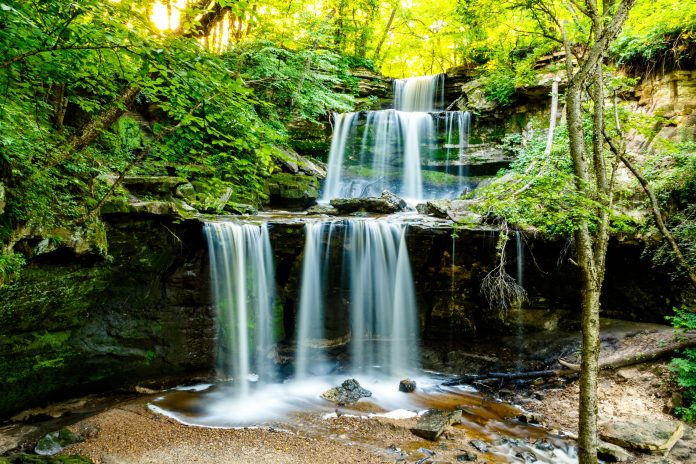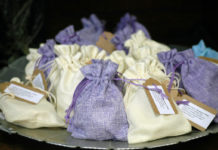[Featured Photo by Rick Pepper – Triple Falls above the Blue Earth River]
It all began with a beautiful view.
In the summer of 2016, Southern Minnesota native Paul Ebbenga was climbing a mountain with his then-girlfriend. Just outside of Winter Park in Colorado, the ridge they ascended had 2,000-foot drop-offs on either side that gave them the feeling of walking in midair. Puffy clouds swam just below their feet. The view extended for miles.
“It was a really picturesque adventure,” Ebbenga remembered. “We were thinking to ourselves, how amazing would it be to capture this in some way? We wanted to be able to share it with people.”
Birth of an Idea
Back home in Denver, Colorado, Ebbenga started researching drone technology. A specialist in luxury hotel management, Ebbenga had a wide range of interests spanning from building computers, to ecology, to visiting as much of the Southwestern United States as he could reach. His life, and now a potential new hobby of capturing cinematic views of the beautiful local mountains, seemed firmly fixed in Denver. Then in the space of researching drones, everything changed.
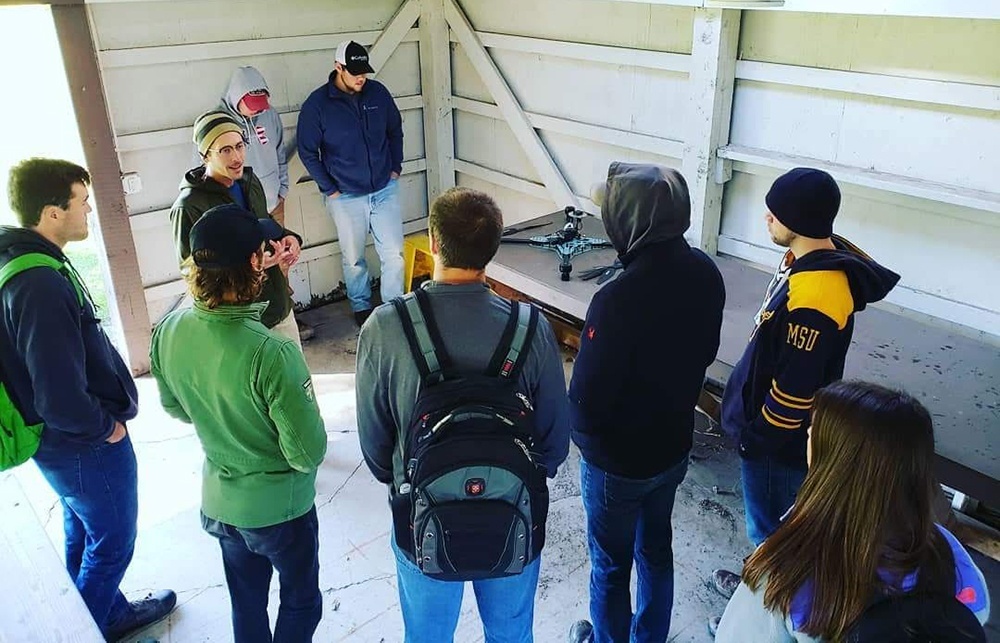
“Right when I was about to order parts for this drone, I discovered a lot of other applications for drone technology and one of these applications was agriculture,” explained Ebbenga. A thorough researcher, he looked further into this possibility and was impressed by what he found. Drone technicians were just beginning to use their equipment to identify farming-byproduct chemical emissions and discover ways to reduce the discharges. Ebbenga was fascinated.
“One of my core values is my inner connection to my biology and my environmental surroundings,” Ebbenga said. “Because I was diving that deep into drone technology for agriculture, I said ok, maybe this could be a beacon of light to get people excited about agriculture.”
Home is Calling
At the same time as Ebbenga was learning more about chemical byproducts from farming, he stumbled upon an article the Star Tribune had recently published about the dire condition of Southern Minnesota’s lakes. A collection of researchers and scientists in collaboration with the Minnesota Pollution Control Agency, were quoted as calling the areas lakes “unswimmable.”
Blue Earth County is one of the biggest contributors to the ‘Dead Zone’ in the Gulf of Mexico
“Their suggestion, and mind you this is coming from an agency who’s sworn to control the pollution, was to give up on them,” recalled Ebbenga. “They said, ‘Forget about it. They’ll never be swimmable again. We’re going to focus on Northern Minnesota lakes that still have a chance to be salvaged.’”
Ebbenga was shocked to see his home community in the news for such an unhappy reason. Surprisingly, the shock developed into an ardent desire to do something for the state in which he grew up.
“When I moved away from Southern Minnesota, I didn’t really have any intentions of moving back,” Ebbenga said. “It wasn’t out of the question, but I was travelling the world and seeing new places in the Southwest.” The drone research combined with the article’s dire message sparked a need that Colorado couldn’t fulfill.
“It was kind of calling home to me,” Ebbenga said.
A New Venture
Ebbenga was quick to answer the call. By the summer of 2018, he had quit his job in the Colorado hotel business and moved home to Mankato, where he rented an office and continued his research into agricultural applications for drones. He also met with city managers, local business owners, and concerned citizens about what they thought were the area’s most alarming ecological concerns. What they shared made him realize that his focus would have to be bigger.
“I was coming to an understanding that I could sit here, and I could build this drone and maybe offer a service, but that service wasn’t going to solve the problem we’re facing as a whole,” said Ebbenga. “I recognized that there was a greater need in this community and that’s kind of where Blue Earth Project blossomed out of.”
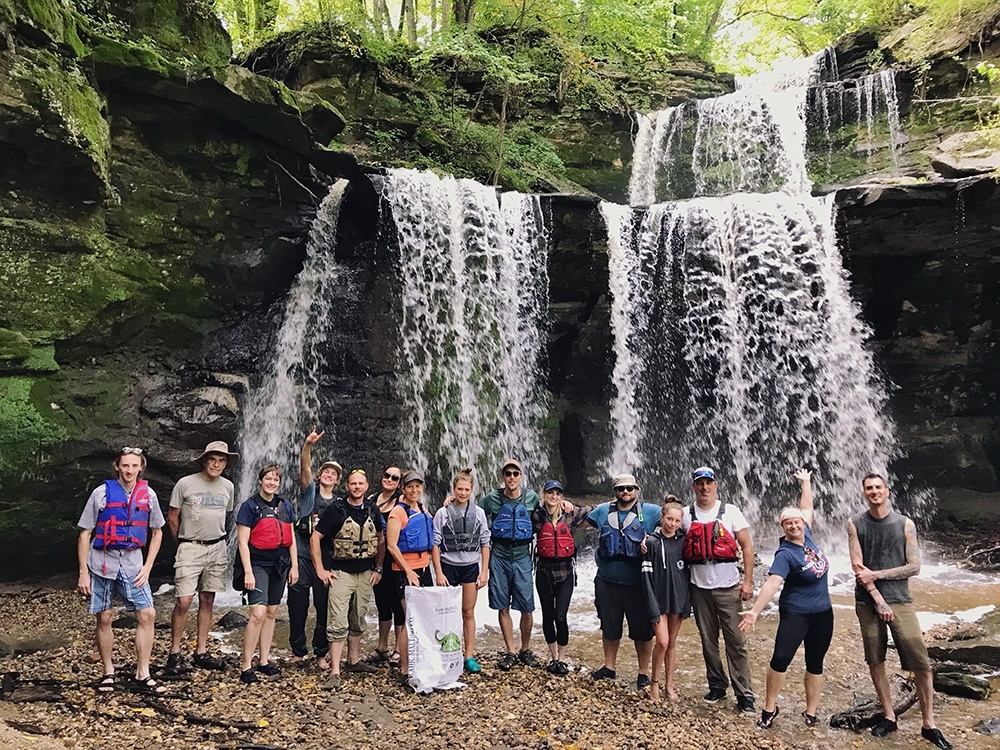
Ebbenga started by creating a social media page where he could share his findings and the community could respond with their own information and ideas. He also drew upon a cause that still acts as a cornerstone for the Blue Earth Project’s mission today: Improving the local waterways. This was especially important to the Project due to the damaged state of Southern Minnesota’s water bodies.
“Blue Earth County actually has more river miles than any other county in Southern Minnesota and we’re not even that big of a county, so that says a lot about how much water we’ve got here,” said Ebbenga. “We’re responsible for a lot of square miles. All of the water that comes through here has agricultural land draining into it.”
Seth Yocum, the Project’s head for aqualogical solutions, mentioned that according to the Minnesota Pollution Control agency, Blue Earth County is one of the biggest contributors to the “Dead Zone” in the Gulf of Mexico. Nitrates, nutrients used in agriculture as well as lawn fertilizer, have created an area in the Gulf where aquatic life can’t survive.
“We can do better to manage our resources to provide a better environment for every citizen not just in our area but all the way downstream,” said Yocum, who believes that the Blue Earth community at large can find ways to improve the local water bodies without putting an unnecessary burden on farmers. Because Mankato is a regional center for industry and agriculture, the Project’s team views the city as an excellent place to model good aqualogical practices.
“If we can stop the decline in the condition of these bodies of water and possibly turn it around we can see an increase in the quality of life for livestock, citizens, and wildlife as well as modeling a more sustainable movement towards water in general,” said Yocum. “Small steps towards healthier water pays dividends across the board. We are committed to helping every individual and business provide the best practice to manage water quality for themselves and everyone else downstream.”
Small Steps – Adopt a River
The first step the Project chose to take toward better water quality was straightforward. At the time he was developing the Blue Earth Project, Ebbenga was also acting as a guide for Bent River Outfitters, a Mankato-based company that offers canoe and kayak river excursions and rentals. Leading groups down the Blue Earth River, Ebbenga wondered: What if there was a way to adopt a river for cleaning and protection the way the Department of Transportation allowed adopting a highway?
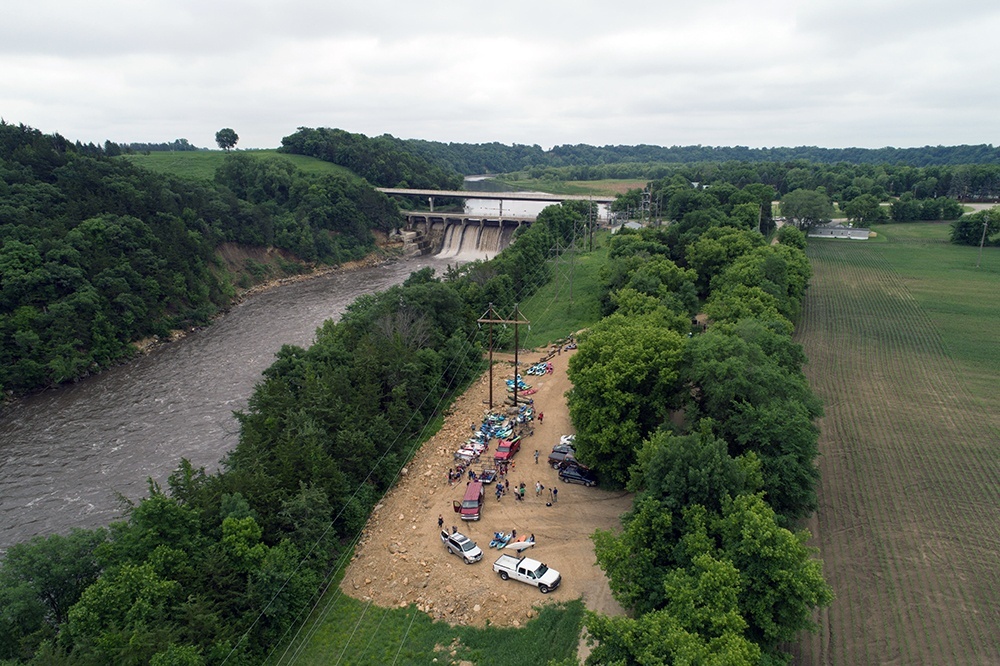
“That was really our first program outside of trying to have a social media presence,” Ebbenga said. He and a small team of helpers worked with Minnesota’s Conservation Core to begin a river adoption program in the Mankato area. With the help of Bent River Outfitters, the Blue Earth Project personally adopted the Blue Earth River stretch between Rapidan Dam and County Road 90, and set up an annual cleanup event that they opened to the public. This August, the Project will host it’s third annual cleanup.
“We’re really trying to do things in the real world as opposed to just sharing memes and quotes and articles online because you can only have a certain effect with that,” said Ebbenga.
Smaller Footprint
This desire to make a real-world difference has spurred Ebbenga and his team of six to expand the services of the Blue Earth Project. Besides offering consultation services to local businesses and farmers regarding possible eco-friendly practices, the Project is also responsible for getting many Mankato citizens into a community solar garden.

“There’s a lot of awesome, cost-free ways to get your household’s energy from a solar garden,” Ebbenga said. “You can actually end up saving money on it.” The Project works under Xcel’s Community Solar Rewards Program and has partnered with local developers to provide access and education allowing local citizens a chance to participate and save some money while going green.
“That’s a hundred less households drawing power directly from a coal plant,” Ebbenga said of the people who have joined the solar garden. “We have a team member who’s actually building a solar garden up by Gaylord right now, so we’re going to start doing customer acquisitions up by North Mankato this spring and summer.”
Podcast
Another regularly scheduled offering is a Blue Earth Project podcast. The podcast’s producer David Sandersfeld expressed the team’s collective hope that the podcast will allow them to reach and inspire a larger audience than they can meet with individually.
“I recall one night at Paul’s house where he was having a conversation with another [person] about the Blue Earth Project and all it entails,” Sandersfeld shared. “It was a really deep and intelligent conversation. I remember telling Paul, ‘Man, if we just recorded what you guys talked about and people could listen it’d open some eyes!’”
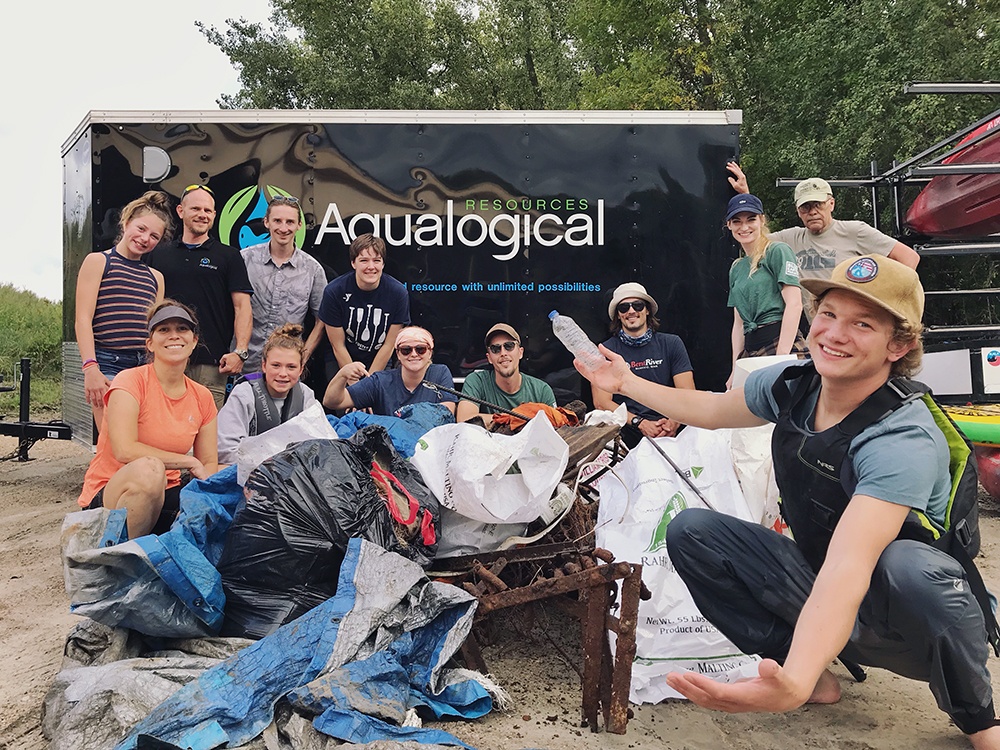
From the beginning, the podcasts were structured as a conversation between project members as well as community residents about a variety of different ecological topics. Sandersfeld would record the talks on his digital audio workstation and produce them for the general public.
“The idea was to let things flow naturally and not stick to too much of a script because we found some of the best conversations we were having around Blue Earth Project’s initiatives and ideas came out that way,” said Sandersfeld. “I think the service [podcast] provides some crucial information that the community not only needs to hear but needs to start implementing the things discussed so that we can ensure a brighter and more sustainable future.
New Projects
Other budding projects include seasonal street cleanups, educational resources, a tree-planting program to offset the area’s carbon footprint, and an Eco Market that will be available in early 2020. The Market is an online store sponsored by the Project, which offers the best of eco-friendly products from in-house and outside vendors.
According to Ebbenga, the healthy flow of exciting programs and fun ideas is all due to the excellence of his team members.
“We’ve got a lot of people on our team who are familiar with the current conventional practices but also have a good footing in the potential for innovation and alternative methods,” Ebbenga said. “We really believe in changing the course of Southern Minnesota for the better and that’s kind of the key driver behind us.”
It Will Take the Community
The importance of positively changing the area’s ecological future is at the heart of every public program and educational event run by the Project. Ideally, Ebbenga wants the citizens of Mankato to see the Project as a tool that is always available for their use.
“The success of Blue Earth Project is going to ride on the community’s willingness to embrace the concept,” Ebbenga said. “When I read that article from 2016 and heard what the researchers were saying, the first feeling I had was, ‘What the heck could I possibly do about this?’ I think that a lot of people are feeling really, really apathetic about the environmental situation. They’re just at a loss for having any substantial impact on the global scale.” Ebbenga hopes that Mankato’s residents view the Blue Earth Project’s resources as a means of making a difference.
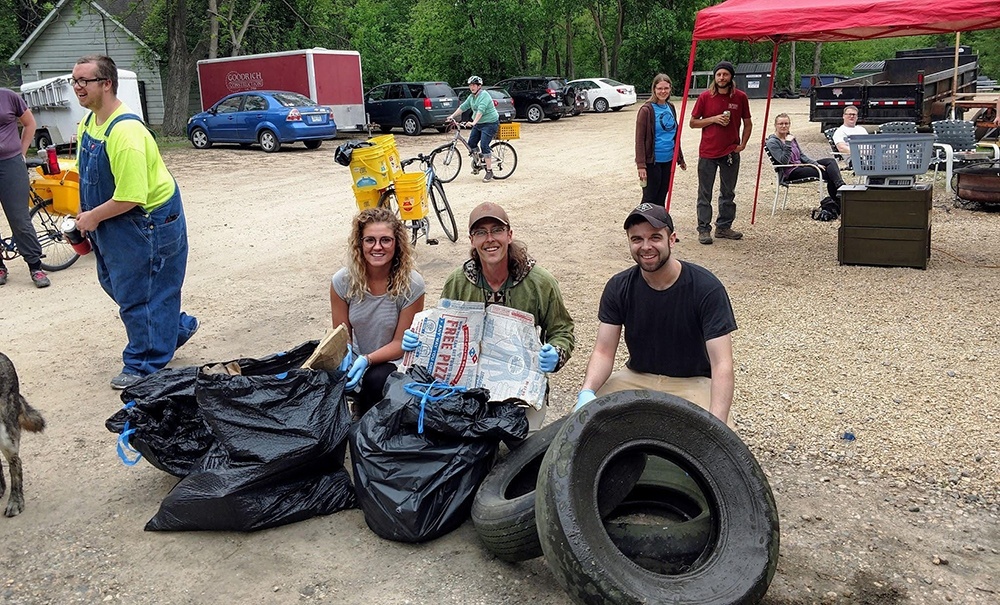
In order to help people with its programming and consulting services, the Blue Earth Project’s team is careful to take into consideration the needs of the community as well as the needs of the environment.
“The first step is having honest conversations,” Ebbenga explained. “There’s this big issue where farmers in southern Minnesota are having a hard time breaking even with reduced commodity prices in the grain market, so they don’t have a lot of expendable income these days to dedicate towards innovative technologies that are going to allow them to reduce their footprint. There’s a huge concern for making agriculture the cornerstone of our economy but also holding the industry accountable for the effect it’s having on our land and water resources.”
The success of Blue Earth Project is going to ride on the community’s willingness to embrace the conceptPaul Ebbenga
In anything from reducing farmland waste drainage in the local water to helping stores find alternatives for plastic bags, Ebbenga believes that through the Blue Earth Project, the community can work together to find workable solutions to better the environment they share.
“I want people to know we’re not just your typical rainbows and butterflies environmental organization,” Ebbenga laughed. “We’re developing a lot of things that are going to have some substantial real-world effects. We’re really confident and excited about a lot of the things that are in the near future and the far future and we’re honestly just getting started, so stay tuned!”
Additional Links
- The Blue Earth Project on Facebook
- The Blue Earth Project YouTube channel
- Rapidan Dam on MankatoLIFE
- Rapidan Dam Park on MankatoLIFE
Blue Earth Project Mission
Blue Earth Project leads Southern Minnesota into an ecological paradigm shift towards a resilient future. With a localized approach to a global problem, our innovative programming, community activation, and bold leadership will aid Greater Mankato in becoming a shining example of a community that properly addressed a crisis.
Want to Get Involved?
The Blue Earth Project is looking for like-minded people with a wide variety of talents to help. If you’d like to volunteer you can visit the Project’s Get Involved page. Here are the opportunities currently listed:
- General Volunteers
- Community Solar Sales
- Social Content Canvassers
- Social Content Creators
- Social Content Editors
- Grant Writers
- Eco Educators
- Media Relations
- Public Relations
- Podcast Guests
- Podcast Hosts
- Soil Specialists
- Water Specialists
- Rural Liaisons
- Photo / Video
- Marketing Strategists
- Web Developers
- Farmers
- Engineers
- River Guides
- Artists

